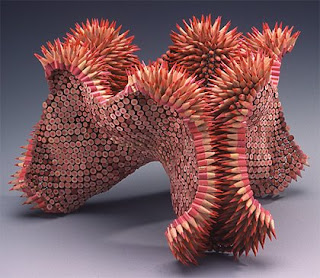Currently showing at Flinders St Gallery (Flinders St near Taylor Square) is the Exhibition Faith and Lust. The exhibition features works by a number of established and not so established artists all producing work that explores various approaches to art through abstraction.
Some of the artists showing are Alex Lawler, Ron Adams, Tom Langlands, Christoph Bruckner and Stephen Hodge.
The exhibition includes both two and three-dimensional works.
I'm pretty sure it only runs til next weekend but it's worth checking out.
Details: Faith & Lust at Flinders St Gallery 61 Flinders Street Darlinghurst Wed - Sat 11am - 6pm
http://www.flindersstreetgallery.com























